#Jean Claude Rousseau
Text




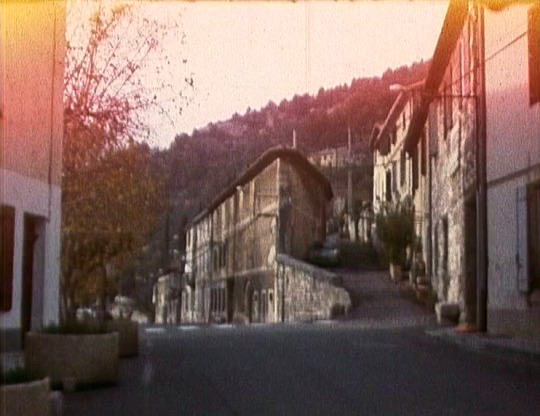



La Vallée close, Jean-Claude Rousseau, 1995
0 notes
Text
ENCONTRE UM AUTOR:
Envie sugestões.
Leia uma citação no modo aleatório.
Autores Desconhecidos
Adélia Prado
Adrian Tchaikovsky
Affonso Romano de Sant’anna
Alain de Botton
Albert Einstein
Aldous Huxley
Alexander Pushkin
Amanda Gorman
Anaïs Nin
Andy Warhol
Andy Wootea
Anna Quindlen
Anne Frank
Antoine de Saint-Exupéry
Aristóteles
Arnaldo Jabor
Arthur Schopenhauer
Augusto Cury
Ben Howard
Benjamin Alire Sáenz
Benjamin Rush
Bill Keane
Bob Dylan
Brigitte Nicole
C. JoyBell C.
C.S. Lewis
Carl Jung
Carlos Drummond de Andrade
Carlos Fuentes
Carol Ann Duffy
Carol Rifka Brunt
Carolina Maria de Jesus
Caroline Kennedy
Cassandra Clare
Cecelia Ahern
Cecília Meireles
Cesare Pavese
Charles Baudelaire
Charles Chaplin
Charlotte Nsingi
Cheryl Strayed
Clarice Lispector
Claude Debussy
Coco Chanel
Connor Franta
Coolleen Hoover
Cora Coralina
Czesław Miłosz
Dale Carnegie
David Hume
Deborah Levy
Djuna Barnes
Dmitri Shostakovich
Douglas Coupland
Dream Hampton
E. E. Cummings
E. Grin
E. Lockhart
EA Bucchianeri
Edith Wharton
Ekta Somera
Elbert Hubbard
Elizabeth Acevedo
Elizabeth Strout
Emile Coue
Emily Brontë
Ernest Hemingway
Esther Hicks
Faraaz Kazi
Farah Gabdon
Fernando Pessoa
Fiódor Dostoiévski
Florbela Espanca
Franz Kafka
Frédéric Chopin
Fredrik Backman
Friedrich Nietzsche
Galileu Galilei
Georg Wilhelm Friedrich Hegel
George Orwell
Hafiz
Hanif Abdurraqib
Helen Oyeyemi
Henry Miller
Henry Rollins
Hilda Hilst
Iain Thomas
Immanuel Kant
Jacki Joyner-Kersee
James Baldwin
James Patterson
Jane Austen
Jean Jacques Rousseau
Jean Rhys
Jean-Paul Sartre
Jeremy Hammond
JK Rowling
João Guimarães Rosa
Joe Brock
Johannes Brahms
John Banville
John C. Maxwell
John Green
John Wooden
Jojo Moyes
Jorge Amado
José Leite Lopes
Joy Harjo
Juan Ramón Jiménez
Juansen Dizon
Katrina Mayer
Kurt Cobain
L.J. Smith
L.M. Montgomery
Leo Tolstoy
Lisa Kleypas
Lord Byron
Lord Huron
Louise Glück
Lucille Clifton
Ludwig van Beethoven
Lya Luft
Machado de Assis
Maggi Myers
Mahmoud Darwish
Manila Luzon
Manuel Bandeira
Marcel Proust
Margaret Mead
Marina Abramović
Mario Quintana
Mark Yakich
Marla de Queiroz
Martha Medeiros
Martin Luther King
Mary Oliver
Mattia
Maya Angelou
Mehdi Akhavan-Sales
Melissa Cox
Michaela Chung
Miguel de Cervantes Saavedra
Mitch Albom
N.K. Jemisin
Neal Shusterman
Neil Gaiman
Nicholas Sparks
Nietzsche
Nikita Gill
Nora Roberts
Ocean Vuong
Osho
Pablo Neruda
Patrick Rothfuss
Patti Smith
Paulo Coelho
Paulo Leminski
Perina
Peter Ilyich Tchaikovsky
Phil Good
Pierre Ronsard
Platão
Poe
R.M. Drake
Raamai
Rabindranath Tagore
Rachel de Queiroz
Ralph Emerson
Raymond Chandler
René Descartes
Reyna Biddy
Richard Kadrey
Richard Wagner
Ritu Ghatourey
Roald Dahl
Robert Schumann
Roy T. Bennett
Rumi
Ruth Rendell
Sage Francis
Séneca
Sérgio Vaz
Shirley Jackson
Sigmund Freud
Simone de Beauvoir
Spike Jonze
Stars Go Dim
Steve Jobs
Stephen Chbosky
Stevie Nicks
Sumaiya
Susan Gale
Sydney J. Harris
Sylvester McNutt
Sylvia Plath
Sysanna Kaysen
Ted Chiang
Thomas Keneally
Thomas Mann
Truman Capote
Tyler Knott Gregson
Veronica Roth
Victor Hugo
Vincent van Gogh
Virgílio Ferreira
Virginia Woolf
Vladimir Nabokov
Voltaire
Wale Ayinla
Warsan Shire
William C. Hannan
William Shakespeare
Wolfgang Amadeus Mozart
Yasmin Mogahed
Yoke Lore
Yoko Ogawa
148 notes
·
View notes
Photo


The Bride Wore Black will be released on Blu-ray on February 14 via Kino Lorber. The 1968 French revenge thriller is directed by François Truffaut (The 400 Blows, Fahrenheit 451).
Truffaut co-wrote the script with Jean-Louis Richard, based on the 1940 novel by Cornell Woolrich (Rear Window). Jeanne Moreau stars with Michel Bouquet, Jean-Claude Brialy, Claude Rich, Charles Denner, Michael Lonsdale, and Serge Rousseau.
The Bride Wore Black includes reversible artwork. Special features are listed below.
Special features:
Audio commentary by critics Julie Kirgo, Steven C. Smith, and Nick Redman
Theatrical trailer
After newly widowed Julie Kohler's (Jeanne Moreau) mother stops her from commiting suicide, she hatches a different plan to deal with her grief. In a small black book, she lists five men. One by one she visits the men with murderous intentions, assuming different identities to get close to them. Only one man remains elusive, having been captured by the cops before Julie could reach him -- but despite the obstacles, Julie intends to see her task through to the end.
Pre-order The Bride Wore Black.
#the bride wore black#francois truffaut#françois truffaut#jeanne moreau#40s movies#1940s movies#kino lorber#dvd#gift#cornell woolrich#french film#jean claude brialy#michael lonsdale#alfred hitchcock#rear window
17 notes
·
View notes
Photo
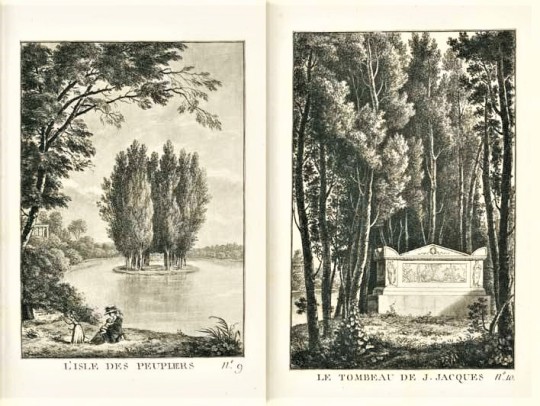


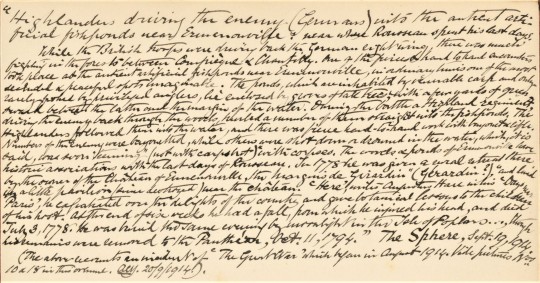






Decorative Sunday
This Sunday we present our 1811 copy of Promenade ou Itinéraire des Jardins D’Ermenonville, with aquatints by J. Marigot. Born Jacques-François Mérigot II (1760-1824) to the Parisian publisher and bookseller Jacques-François Mérigot (c. 1720-1799), the younger engraver and printer spent much of his career in London working under the name James Merigot. Promenade ou Itinéraire des Jardins D’Ermenonville was first published in 1788 by the elder Mérigot. Our 1811 printing also lists Merigot as publisher; by that time the business was most likely under the direction of Jacques-François’s younger brother, Jean-Gabriel Mérigot (c. 1738-1818). Also listed as publishers are (Claude) Brunot-Labbe and Le Normant, both of Paris, and M. Richard of Château d’Ermenonville. Printing was completed by L’Impimerie de Belin.
The book features twenty-five aquatints of views from D’Ermenonville, now known as Parc Jean-Jacques Rousseau. Located about an hour by car from the center of Paris, the gardens were cultivated by René de Girardin as an illustration of his ideal philosophical relationship between man and nature. Giradin was Jean-Jacques Rousseau’s last pupil and Rousseau spent the last six weeks of his life there, and was laid to rest in the park’s l’Ile des Peupliers. His remains were later relocated to the Panthéon; his empty tomb (or cenotaph) remains as a monument to the great French philosopher.
In addition to select aquatints, featured above is the book’s lovely Turkish-patterned marbled endpapers and two leaves of music for a song written by Girardin’s son Louis Stanislas de Girardin, titled “Du Berger du la Grotte Verte” or “Shepard of the Green Grotto.” Also included is a handwritten note written on the flyleaf, copied from the British newspaper The Sphere, dated September of 1914.
Find more Decorative Sunday posts here.
-Olivia, Special Collections Graduate Intern
#Decorative Sunday#Promenade ou Itinéraire des Jardins D’Ermenonville#Jardins D'Ermenonville#Ermenonville#Parc Jean-Jacques Rousseau#Jean-Jacques Rousseau#Rousseau#J. Marigot#Jacques-François Mérigot#James Merigot#aquatint#Belin#Le Normant#Brunot-Labbe#Chateau D'Ermenonville#René de Girardin#Decorative Plates#Decorative Arts#olivia
43 notes
·
View notes
Text
INDEX
CLASSICO E ROMANTICO
William Blake, Newton
Jöhan Heinrich Füssli, L'incubo
Étienne-Luoise Boullée, Progetto per il cenotafio di Newton
Claude-Nicolas Ledoux, Casa delle Guardie campestri
John Constable, La chiusa
e il mulino di Flatford
William Turner, Mare in tempesta
Francisco Goya, Fucilazione
Jacques-Louis David, La morte di Marat
Antonio Canova, Monumento di Maria Cristina d’Austria
Jean-August-Dominique Ingres, La bagnante di Valpingon
Théodore Géricault, La zattera della Medusa
Eugène Delacroix, La Libertà guida il popolo
Lorenzo Bartolini, Monumento funebre della contessa Zamoyska
François Rude, Rilievo dell'Arco di trionfo di Parigi
Camille Corot, La cattedrale di Chartres
Théodore Rousseau, Temporale; veduta della piana di Montmartre
Honoré Daumier, Vogliamo Barabba
Constantin Guys, Per la strada
Honoré Daumier, Il vagone di terza classe
François Millet, L’Angelus
Camille Pissarro, Sentiero nel bosco in estate
LA REALTA' E LA COSCIENZA (l’Impressionismo; La fotografia; Il Neo-impressionismo; Il Simbolismo; L’architettura degli ingegneri)
Gustave Courbet, Ragazze in riva alla Senna (Estate)
Edouard Manet, Le déjeuner sur l'herbe
Alfred Sisley, Isola della Grande Jatte
Claude Monet, Regate ad Argenteuil;
Claude Monet, La Cattedrale di Rouen
Auguste Renoir, Le Moulin de la Galette
Edgar Degas, L'absinthe
Paul Cézanne, L'asino e i ladri
Paul Cézanne, La casa dell'impiccato ad Auvers (Non Aversa)
Paul Cézanne, I giocatori di carte
Paul Cézanne, La montagna Sainte-Victoire
Georges Seurat, Una domenica pomeriggio all’isola della Grande-Jatte
Paul Signac, Ingresso del porto a Marsiglia
Paul Gauguin, Te Tamari No Atua
Vincent van Gogh, Ritratto del postino Roulin
Henri de Toulouse-Lautrec, La toilette
Henri Rousseau detto il Doganiere, La Guerra
Odilon Redon, Nascita di Venere
Gustave Moreau, L'apparizione
Pierre Bonnard, La toilette del mattino
Auguste Rodin, Monumento a Balzac
Medardo Rosso, Impressione di bambino davanti alle cucine economiche
I pittori della cerchia di Mallarmé
Edouard Vuillard, La pappa di Annette.
James MeNeill Whistler, Notturno in blu e oro: il vecchio ponte di Battersea
L' OTTOCENTO IN ITALIA, IN GERMANIA, IN INGHILTERRA
1. Giovanni Fattori, In vedetta
IL MODERNISMO (Urbanistica e architettura moderniste; Art Nouveau; La pittura del Modernismo; Pont-Aven e Nabis)
1. Antoni Gaudí, Casa Milá a Barcellona
2. Adolf Loos, Casa Steiner a Vienna
3. Antoni Gaudi, Il Parco Güell a Barcellona
L’ARTE COME ESPRESSIONE (Espressionismo; La grafica dell’Espressionismo)
1. Edvard Munch, Pubertà
André Derain, Donna in camicia
Ernst Ludwig Kirchner, Marcella
Henri Matisse, La danza
Emil Nolde, Rose rosse e gialle
Oskar Kokoschka, Chamonix, Monte Bianco
L’EPOCA DEL FUNZIONALISMO (Urbanistica, architettura, disegno industriale; Pittura e scultura; Der blaue Reiter; L’avanguardia russa; La situazione italiana; École de Paris; Dada; Il Surrealismo; La situazione in Inghilterra; La situazione italiana: Metafisica, Novecento, anti-Novecento)
Le Corbusier, Villa Savoye a Poissy
Le Corbusier, Cappella di Nötre-Dame-du-Haute a Ronchamp
Walter Gropius, La Bauhaus a Dessau
Ludwig Mies van der Rohe, Plastico di un grattacielo in verro per Chicago
Ludwig Mies van der Rohe, Seagram Buildings a New York
Tre progetti per il Palazzo dei Soviet. Le Corbusier e Pierre Jeanneret,
Walter Gropius, Bertold Luberkin,
Teo van Docsburg e Hans Arp, Cinema-ristorante L'Aubette a Strasburgo.
Thomas Gerrit Rietveld, Poltrona con elementi in nero, rosso, blu
Pier Mondrian, Composizione in rosso, giallo, blu
Aivar Aalto, Sanatorio a Paimio - Poltrona
Frank Lloyd Wright, Casa Kaufmann a Bear Run
Pablo Picasso, I saltimbanchi; Les demoiselles d’Avignon; Natura morta spagnola
Georges Braque, Narura morta con l’asso di fiori
Robert Delaunay, Tour Eiffel
Juan Gris, Natura morta con fruttiera e bottiglia d’acqua
Georges Braque, Natura morta con credenza: Café-bar
Marcel Duchamp, Nu descendant un escalier n. 2
Umberto Boccioni, Forme uniche nella continuità dello spazio
Giacomo Balla, Automobile in corsa
Vasili; Kandinsky, Primo acquerello astratto; Punte nell'arco
Paul Klee, Strada principale e strade laterali
Anton Pevsner, Costruzione dinamica
Naum Gabo, Costruzione nello spazio; Il cristallo
Fernand Léger, Composizione con tre figure
Joan Miró, La lezione di sci; Donne e uccello al chiaro di luna
Giuseppe Terragni, Progetto dell'Asilo Sant'Elia a Como
Atanasio Soldati, Composizione
Constantin Brancusi, La Maiastra
Amedeo Modigliani, Ritratto di Léopold Zborowski
Georges Rouault, Cristo Deriso
Marc Chagall, A la Russie, aux anes et aux autres
Pablo Picasso, Guernica
René Magritte, La condizione umana Il
Man Ray, Motivo perpetuo
Henry Moore, Figura sdraiata
Alexander Calder, Mobile
Ben Nicholson, Feb. 28-53 (Vertical Seconds)
Francis Bacon, Studio dal ritratto di Innocenzo X di Velázquez
Diego Rivera, L'esecuzione dell'imperatore Massimiliano
David Alfaro Sigueiros, Morte all'invasore
Giorgio De Chirico, Le Muse inquietanti
Carlo Carrà, L'amante dell'ingegnere
Alberto Savinio, Nella foresta
Osvaldo Licini, Amalasunta su fondo blu
Giorgio Morandi, Natura morta con fruttiera
7. LA CRISI DELL'ARTE COME "SCIENZA EUROPEA" (Urbanistica e architettura; La ricerca visiva; La pittura negli Stati Uniti)
Ellsworth Kelly, Verde, blu, rosso
Morris Louis, Gamma Delta
László Moholy-Nagy, Composizione Q XX
Julius Bissier, 25 settembre 1963?
Josef Albers, Omaggio al quadrato
Arshile Gorky, Giardino a Sochi
Jean Fautrier, Nudo
Jean Dubuffet, Orateur
André Masson, Les Chevaliers
Hans Hartung, Composizione
Jackson Pollock, Sentieri ondulati
Mark Rothko, Rosso e blu su rosso
Albero Burri, Sacco B.
Antoni Tápies, Bianco e arancione
Giuseppe Capogrossi, Superficie 114
Lucio Fontana, Concetto spaziale: attesa
Alberto Giacometti, Figura
Ettore Colla, Officina solare
Mark Tobey, Circus transfigured
Georges Mathieu, Cast
Victor Vasarély, Composizione.
Kenneth Noland, Empireo
Clyfford Still, 1962-D
Emilio Vedova, Plurimo n. 1; Le mani addosso
Robert Rauschenberg, Letto
Mimmo Rotella, Marilyn
Roy Lichtenstein, Il tempio di Apollo
Andy Warhol, Marilyn Monroe
2 notes
·
View notes
Text
Here are even more episode titles for Little Einsteins: New Missions.
The ultimate great sky race! Rocket was gonna compete in the biggest great sky race ever and try and win the bouncy castle trophy, but Big Jet is gonna cheat. Will Rocket be a good sport and defend his titles as champion? Only time will tell. Featuring the art “A shower below the summit” by Katsushika Hokusai and the music “Flight of the bumblebee” by Nikolay Rimsky-Korsakov.
Star struck. The team and I were having a campout in June’s backyard. We were using June’s telescope to look at the stars. When suddenly, a star fell from the sky and got stuck to my shirt. Star explained she was going to have a playdate on Pluto with Saturn’s ring, music robot and the Meeps. So, we volunteered to help star get back to outer space. Can we get her home safely? Find out next time. Featuring the art “The Tree of Life” by Gustav Klimt & the music “Symphony Number 9 in E Minor: From the New World, Largo” by Antonin Dvorak.
Leo’s birthday lasagna. It was Leo’s birthday. Everyone was celebrating, and I suggested we should have marshmallow lasagna. So, I went to collect the ingredients and make it while everyone has fun at the party. I didn’t mind missing out on some of the fun, I promised Leo I wouldn’t let him down. Will I be able to make the marshmallow lasagna for him? Find out soon. Featuring the art “Haystacks at the End of Summer, Morning Effect” by Claude Monet and the music “Rondeau” by Jean-Joseph Mouret.
Kids to the rescue! Rocket and Big Jet were going to be racing in an all out grudge match in the all around the USA race. But Big Jet cheated by blowing a bubble and sending Rocket away to a cave! Can Leo, Annie, Quincy and June rescue him before the race starts? Only time will tell. Featuring the art “Tiger in a tropical storm” and “the merry jesters” by Henri Rousseau and the music “Peer Gynt suite number 1: In the hall of the mountain king” by Edvard Grieg.
Annie’s kitty catastrophe! The Little Einsteins and I were watching cute cat videos on the web when suddenly Big Jet flew in. And he had teamed up with the same witch from “brothers and sisters to the rescue” and she used her wand to change Annie into a cat! Can we get the wand and change Annie back into a girl? Only time will tell. Featuring the art “On the River Greta” by John Atkinson Grimshaw and the German folk art and the music “Symphony number 5″ by Ludwig von Beethoven.
Annie and August’s musical playdate. Annie has planned a musical playdate with her favorite mermaid friend, August. But she couldn’t find her. August was looking for Annie too. Will Annie rely on her big brother and her friends to help her find August? Featuring the music “the can can” by Jacques Offenbach.
The around the world Easter egg hunt. The Little Einsteins were celebrating Easter and they were going to go on an Easter egg hunt all around the world. They were determined to fill Rocket’s Easter basket all the way to the top. But they had to hurry or that sneaky Big Jet will try and eat all the eggs for himself! Will the team find all the eggs before Big Jet does? Find out soon. Featuring the art “Fabergé Eggs” and the music “Aida” by Giuseppe Verdi.
The broken buttons. Rocket was taking a nap when Dee Dee snuck on board him while he was sleeping. When she saw the buttons on his dashboard, she couldn’t resist herself and began to playfully push them. Rocket woke with a start and felt himself changing like crazy! Then all of a sudden…some of Rocket’s buttons broke off! The bug buttons, the animal buttons, the construction vehicle buttons, the fire rescue buttons, the accelerando button, the high and low buttons, the clapper catcher button, the submarine button, the pogo bouncer button, the train button, the flying button, and even the super fast button! Ellie promised to help Rocket find all his missing buttons. Will she find them all in time so Rocket can get back to doing all the things he loves to do? Only time will tell.
The lonely vampire girl. The team was going a Halloween carnival and they were going trick or treating to famous buildings. But I had gotten word that there vampire girl who was named Flandre Scarlet. She sounded scary, but she’s actually very nice. She’s got colorful wings and she’s really cute too. But she’s also rather lonely. Nobody wanted to play with her and most of her toys broke. Will the team cheer her up by taking her trick or treating and going to the Halloween carnival? Find out next time. Featuring the art “The scream” by Edvard Munch and music “Peer Gynt suite number 1: in the hall of the mountain king” by Edvard Grieg.
The missing marshmallows! The team was going camping. We were going to roast marshmallows and make s’mores to eat for our campout dessert, when Big Jet swooped in and took my bag of marshmallows! He was gonna all of the marshmallows for himself? Can the Little Einsteins save the marshmallows in time before Big Jet eats them? Find out soon.
Annie, Amanda and the ice fairy. The Little Einsteins were playing in the snow, when Amanda & Annie saw a cute ice fairy named Cirno. She has the power to make snow and ice. When suddenly Big Jet and his cronies flew in and kidnapped Cirno! They were going to take her to the volcano known as Mount Vesuvius and melt her! Will the team rescue Cirno in time for the ice sculpture competition at the winter festival? Only time will tell.
Leo and the lost city. Leo was feeling sad because he lost his photo album, where he keeps all his pictures, even his baby pictures. He wanted to know where it is. Big Jet let him know he didn’t take it. Then the Little Einsteins met Dora and she told them that it’s at the lost city. Can they find it so Leo can be very happy again? And if they succeed, will Dora become an honorary team member? Only time will tell.
2 notes
·
View notes
Text
Film list for a while:
Ashes and Snow
A Time to Live A Time to Die
Strangers In Good Company
Borom Sarat
Dead Man's Letter's
Killer of Sheep
Still Life
The Fifth Seal - Az ötödik pecsét (Dir: Zoltán Fábri)
The House Is Black - Owl ol db (Dir: Forough Farrokhzad)
Tie Xi Qu: West of The Tracks - ** 7 X (Dir: Wang Bing)
//As I Was Moving Ahead Occasionally I Saw Brief Glimpses of Beauty (Dir: Jonas Mekas)
The Enclosed Valley - La vallée close (Dir: Jean-Claude Rousseau
Pastoral: To Die in the Country - ElSE • (Dir: Shüji Terayama)
Punishment Park (Dir: Peter Watkins)
//The Cremator - Spalova¿ mrtvol (Dir: Juraj Herz)
0 Pagador de Promessas (Dir: Anselmo Duarte)
Lucifer Rising
//An Elephant Sitting Still
Marketa Lazarova
White Noise
//Platform
The Burmese Harp
2 notes
·
View notes
Video
youtube
LES TABLEAUX QUI PARLENT N° 68 - Diogène antispéciste ?
Diogène n'aimait personne d'autre que les animaux et en particulier les chiens qu'il considérait comme ses égaux. C'est un fait. Il ne se doutait pas en cela qu'il avait un considérable temps d'avance (2500 ans en gros) sur la pensée humaine puisque ce type de doctrine est précisément celui qui s'est exprimé à partir de 1970 dans un courant philosophie appelé l'antispécisme. Courant introduit par le psychologue anglais Richard.D. Ryder qui publia en 1971 l'ouvrage fondateur de la pensée animaliste " Animals, men and morals". La critique antispéciste fondée sur les mêmes modèles dialectiques que le racisme ou le sexisme, correspond de manière plus large à celle du « post-humanisme »Ce dernier a connu un développement certain avec les sciences sociales qui puisent leur source dans la pensée de Jean Jacques Rousseau et dont Claude Lévi-Strauss est le plus illustre représentant moderne.... Pour connaitre la suite, écoutez ce podcast...
3 notes
·
View notes
Text
Billet BONUS - Question de lecteur : C'est quoi cette histoire de loi 1901 qui serait une forme de "neutralisation des projets émancipateurs directement issus de la classe ouvrière" ?"
Bonjour bonjour,
Dans le billet précédent, nous avons vu que Lily Zalzett et Stella Fihn, les deux autrices du livre "Te plains pas c'est pas l'usine" commentaient la loi de 1901 en ces termes :
“Les associations ainsi institutionnalisées sont une tentative, plutôt réussie, de la part de l’Etat de neutralisation des projets émancipateurs directement issus de la classe ouvrière.”
Un de mes (très) (TRES) NOMBREUX lecteurs souhaiterait en savoir plus (et moi aussi figurez-vous !)
Ce passage du livre m'a également interpellé : c’est une phrase assez forte, qui peut être sujette à interprétation, pour laquelle je n’ai pas trouvé de source particulière et qu'il serait donc de bon ton de creuser davantage, notamment parce que... c'est SUPER CROUSTICROQUE et que ça réveille la Elise Lucet du pauvre qui sommeille en moi.
Reprenons le passage qui précède (page 23, si vous vous êtes procuré le bouquin - 7 balles, prix d'un menu kebab avec boisson)
"La loi de 1901, dite de "Waldeck-Rousseau", créant les associations avait entre autres objectifs de donner une forme aux diverses coopératives ouvrières, mutuelles, projets collectifs, plus ou moins utopiques qui fleurissaient depuis quelques décennies. Il s'agit alors, pour l'Etat, de reconnaître des formes en les intégrant plutôt que de lutter sans cesse contre elles : pour le député à l'origine de la loi "la coopération est un outil de paix sociale et un facteur de promotion individuelle."
On comprend donc ici qu'en intégrant les divers collectifs plutôt qu'en se battant contre eux, les choses s'apaisent. Ou comme dit ce dicton un peu ringard : Sois proche de tes amis mais encore plus de tes ennemis.
Pour autant, je pense que pour comprendre pleinement ce passage, il est essentiel de situer le contexte historique dans lequel cette loi a vu le jour mais également de nous servir du présent pour voir où en sont aujourd'hui les libertés associatives.
Pour l’élaboration de ce billet, je me suis particulièrement servie d’une vidéo Youtube publiée le 12 juillet 2021 par le Mouvement Associatif, la représentation nationale des associations françaises présidée actuellement par Claire Thoury. On y retrouve, à l’occasion de la commémoration des 120 ans de la loi, différents intervenants qui nous permettent d’y voir plus clair sur la question des LIBERTES ASSOCIATIVES !
Pour commencer, il est essentiel de revenir un peu en arrière afin d’avoir un aperçu de l’ambiance en 1901 :
On est sur la première année du XXe siècle (truc de ouf) et il se passera pas mal d’événements clés pendant cette décennie. Dans le désordre, on est en pleine Exposition Universelle à Paris, Pierre et Marie Curie reçoivent le prix Nobel de physique (GG), les Suffragettes à Londres sont à donf, Einstein publie ses théories sur la relativité… BREF, ça bouge. Côté météo, on est sur un été très orageux, on note même quelques petites tornades ici et là. Notez qu’on ne s’est pas encore tapé la 1ère Guerre. Un été orageux donc, un peu comme la vibe à l’Assemblée au moment où notre cher Waldeck-Rousseau arrive avec sa loi…

Revenons encore un tout petit peu plus en arrière avec l’aide de notre chouchou national : Nota Bene (dont je vous invite à aller voir la vidéo complète : ici) :
Waldeck-Rousseau n’en est pas à sa première loi puisqu’en 1884, il permet le passage d’une grande étape dans le droit du travail en "écrasant" la loi Le Chapelier (qui interdit les organisations ouvrières) : les syndicats naissent.
En 1891, Paul Lafargue, gendre de Karl Marx, est à l’origine d’une ma[r]xi grève générale. Les ouvriers réclament une augmentation des salaires et des journées de 8h. Cette grève se conclut par une répression sanglante.
On arrive donc à notre fameuse loi de 1901.
Jean-Claude Bardout, magistrat et auteur de l’Histoire étonnante de la loi de 1901. Le droit des associations avant et après Pierre Waldeck-Rousseau, nous explique tout (alors lui, j’était particulièrement ravie qu’il soit présent dans la vidéo du Mouvement Associatif parce que son bouquin coûte 21 balles et je vous aime bien mes petits lecteurs, mais pas TANT.)
Il souligne qu’en France, on a donc une tradition très ancienne (et pas très sympa) qui ne voyait dans l’association qu’une “concession de l’Etat”. Il fallait une autorisation et de manière générale, un “principe de prohibition générale” est de mise. Pour rappel, “L'article 291 du code pénal de 1810 réglemente la liberté d'association : « Nulle association de plus de vingt personnes […] ne pourra se former sans l'agrément du Gouvernement ». La liberté d'association s’est acquise dans la lutte, est aujourd’hui fondamentale et mérite que nous y restions vigilants notre vie durant. Particulièrement dans le contexte de crise que nous connaissons actuellement (oui oui, je paraphrase complètement de Beauvoir, bien vu chakal).
Avec Waldeck-Rousseau (et je pense que je ne l’ai pas suffisamment souligné dans mon article précédent), on change complètement de paradigme. Comme nous l’explique Bardout, l’association est un contrat et pas un morceau de l’Etat qu’on concède à un collectif mais une liberté de l’individu ! C’est un droit naturel, puisque depuis toujours, les hommes et les femmes ont éprouvé ce besoin de s’associer entre eux ; et de conclure “C’est cette capacité associative de se réunir qui fait qu’il y a un besoin de consacrer cela par un droit”.
Alors, à ce stade, vous pouvez me dire : mais alors ??? C’est super positif comme avancée !
Alors, OUI, assurément, mais comme on l’a vu : cette loi passe dans un contexte social particulièrement tendu, elle tente donc de l'apaiser ; l’Assemblée est parcourue de débats houleux lors de son passage, elle ne fait donc pas l'unanimité, notamment sur la question de laïcité entre la majorité et la droite chrétienne (la loi de 1901 mène notamment à la dissolution des congrégations religieuses). Par ailleurs, elle fixe tout de même les limites suivantes (de manière assez logique) : une asso ne pourra pas avoir pour objet : « un objet illicite, contraire aux lois, aux bonnes mœurs, ou qui aurait pour but de porter atteinte à l'intégrité du territoire national et à la forme républicaine du gouvernement ». Comme pour chaque individu, la loi prévoit que l'Etat ne sanctionne qu'a posteriori et non a priori d'un éventuel délit. A part ces éléments, dans mes sources, rien n’évoque de débats directement liés cette potentielle “neutralisation” d’initiatives ouvrières par cette loi.
En revanche… si on fait un petit bond dans le temps pour revenir au présent… alors on peut effectivement parler d'une volonté de “neutralisation” si ce n'est de "contrôle" de ces structures de la part de l'Etat et ce sans AUCUN scrupule.
Pour comprendre, j’ai eu besoin de l’aide de Claire Thoury, Présidente du Mouvement Associatif, qui n’a tout simplement PAS LE TIME.
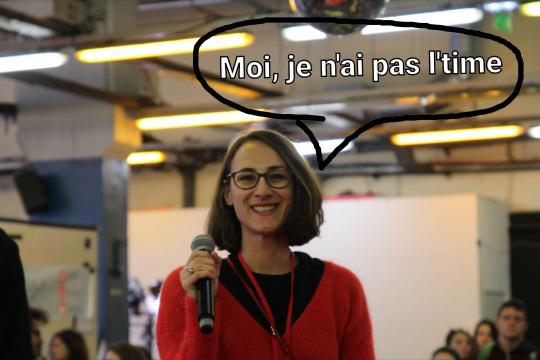
Je m’explique : dans cette vidéo de commémoration des 120 ans de la loi de 1901 publiée en 2021, Thoury intervient pour l’ouverture d’une table ronde composée de personnalités du monde associatif. Dans l’audience, de nombreux acteurs associatifs, mais également les membres du cabinet de Sara El-Haïry, alors Secrétaire d’Etat au sein du gouvernement Castex (alors, déso mais sur El-Haïry, je vais rien développer du tout et vous laisse vous faire votre propre opinion de l’individu en suivant ce lien : ici parce que moi je ne PEUX PLUS, C’EST PHYSIQUE)
Thoury, donc, commence en rappelant que la loi de 1901 est “une grande et belle loi” qui permet de s’associer en toute liberté, quel que soit le projet, “à condition de respecter la loi, évidemment” (important pour la suite).
Elle enchaîne avec trois éléments de contexte dans lequel ces 120 ans sont commémorés :
Le 1er : la crise sanitaire, dans le cadre de laquelle elle rappelle à juste titre l’implication essentielle des acteurs associatifs dans sa gestion - en d’autres termes, merci mais sans nous VOUS SERIEZ TOUS DANS LA SAUCE.
Le 2nd (et le plus important pour nous) : le projet de loi visant à conforter les principes de la République également appelée la loi SÉPARATISME (il fait pas trop flipper ce mot ?) promulguée le 24 août 2021 qui comprend un nouveau “contrat d’engagement républicain pour les associations” qui vient donc s’ajouter à loi de 1901 - en substance, Thoury réaffirme que le Mouvement Associatif ainsi que de nombreux acteurs sont CONTRE (cf leur tribune : ici) : tout d’abord parce qu’il instaure un climat de défiance envers les assos mais aussi et surtout parce que selon eux, demander aux assos de ne pas porter atteinte à l'ordre pubic, c'est un peu fort de café. Pourquoi ? Eh bien parce que :
“faire comme si à travers l’histoire, les associations n’avaient pas contribuées à faire évoluer la loi (...) en allant parfois à rebours de l’ordre public, c’est nier la place décisive des associations dans la construction de la République.”
MIC DROP !! AH DESOLEE MAIS QUELLE PHRASE INCROYABLE !!!!
(Pendant ce temps, El-Haïry transpire de derrière les oreilles)
En guise d’échec et mat, parce que ça ne suffisait pas (et parce qu’elle a pas le time, je vous l’avais bien dit), elle conclut par un troisième élément de contexte : LE TAUX D’ABSTENTION :
“On ne peut pas faire comme si une démocratie sans électeurs n’était pas un problème”
El-HaÏry en K.O Technique. Franchement à côté les Rap Contenders c’était du pipi de chat.
Alors, qu’entend-on par “ces associations allant à rebours de l’ordre public” ? Pour comprendre, prenons pour exemple, allez au pif, le sujet des droits des femmes et penchons nous sur l’intervention de la personne suivante : Véronique Séhier, ex co-dirigeante du Planning Familial (PF). Séhier nous apprend que les premiers pas du PF se sont faits en 1956 dans l’illégalité la plus totale et dans une France où contraception ET avortement étaient interdits. En plus de faire passer des contraceptifs sous le manteau de Suisse ou d’Angleterre, elle rappelle le rôle essentiel du PF dans la sensibilisation et le changement des mentalités qui aura pour conséquence la loi Neuwirth sur la contraception puis la légalisation de l’avortement.
Comme le précise très justement notre ami Bardout :
“Il faut s’interroger lorsque l’Etat dit “Partagez avec moi des valeurs communes”, est-ce que l’Etat est légitime pour demander cela ?"
L'Etat est légitime lorsqu'il défini les valeurs de la Nation ou de la majorité. En revanche, les assos doivent pouvoir défendre d'autres valeurs, notamment celles des minorités.
Pour conclure et pour montrer que bien que l'Etat soit légalement tenu de laisser ses citoyens se regrouper en association librement, il peut également entraver leurs actions de bien nombreuses manières si tant est que leurs valeurs ou objectifs ne lui conviennent pas. Voici une synthèse rapide du travail de Julien Talpin, sociologue et animateur du comité scientifique de l’Observatoire des libertés associatives :
Lui et son équipe ont identifié 4 types d’entraves à la liberté d’association directement opérées par l’Etat , dans toutes ses déclinaisons, à l'heure actuelle : les entraves matérielles (coupes de sub, difficultés d’accès à un local etc.), les entraves administratives (perte d’agréments), la discursive réputationnelle - en gros, les élus qui trashtalk des associatifs ad hominem pour leur nuire ou encore les entraves judiciaires (nombreuses contraventions à peine justifiées à l’encontre de bénévoles dans le but de volontairement mettre en difficulté leurs actions). Si vous souhaitez avoir des exemples concrets et davantage d’informations sur son travail, je vous invite chaleureusement à aller consulter cette partie de la vidéo.
Les traditions anciennes ne sont donc jamais bien loin.
C'est tout pour moi, merci à vous et à bientôôôôt !!!
2 notes
·
View notes
Link
0 notes
Text

"Savage Empire," a classic game by Origin, unfolds in a prehistoric setting imbued with fantastical elements, presenting a unique tableau for philosophical exploration. The narrative, characterized by the player's journey alongside diverse characters such as Aiela, Triolo, and Doctor Johann Spector, among others, lends itself to an analysis through the lenses of philosophical anthropology, ethics, and the philosophy of science and technology.
1. Philosophical Anthropology and the Nature of Humanity:
The diverse tribes and characters in "Savage Empire" offer a rich ground for examining philosophical anthropology, particularly the theories of Ernst Cassirer and Claude Lévi-Strauss. Cassirer’s notion of man as a 'symbolic animal,' constantly creating symbolic worlds, is reflected in the game’s portrayal of varied cultures and belief systems. Lévi-Strauss’s structural anthropology, which explores the underlying structures of human society and culture, can be applied to understand the game's depiction of tribal societies and their customs, suggesting that despite surface differences, human cultures share deep structural similarities in their mythologies and social organizations.
2. Ethics of Interaction and Cultural Relativism:
The player's interactions with different tribes and characters in "Savage Empire" evoke questions of ethical relativism and the ethics of intervention. The philosophy of Emmanuel Levinas, which emphasizes the ethical responsibility to the 'Other' and the face-to-face encounter as foundational to ethics, can be used to critique the player's role. Levinas’s idea that the self is ethically obligated to the Other without assimilating the Other into its own terms challenges the player to consider the impact of their actions on the game's cultures, questioning the morality of intervention in societies different from one's own.
3. The Philosophy of Science and Technology:
Doctor Johann Spector, a character from a more technologically advanced time, embodies the theme of science and technology as a double-edged sword. Drawing from Martin Heidegger’s critique of technology and its capacity to alienate humanity from a more authentic relation to Being, Spector’s presence in the game serves as a focal point for examining the implications of introducing advanced technology into a simpler society. Heidegger’s notion of 'enframing' (Gestell) suggests that viewing the world only through the lens of technological utility can lead to a loss of appreciation for the world’s intrinsic value.
4. The Concept of Heroism and Virtue Ethics:
The protagonist’s journey through the game aligns with Aristotelian virtue ethics, which emphasizes the development of virtuous character traits through practice. The game challenges the player to make decisions that reflect courage, justice, wisdom, and temperance, embodying the Aristotelian ideal of the 'magnanimous man' who acts for the good of the community. The diverse challenges faced by the player mirror the Aristotelian notion that virtue lies in navigating the mean between excess and deficiency.
5. The Social Contract and Political Philosophy:
The alliances formed between the player and the various tribes to combat a common threat can be analyzed through the lens of political philosophy, particularly Thomas Hobbes’s and Jean-Jacques Rousseau’s concepts of the social contract. The voluntary association of tribes, each with its unique customs and governance, to ensure mutual survival reflects Rousseau’s idea of a collective agreement to form a community for the common good, contrasting with Hobbes’s view of the social contract as a necessary surrender of individual freedoms to a sovereign power to avoid the brutish state of nature.
6. The Unity of Knowledge and Plato’s Philosophy of Forms:
The game’s underlying quest to unite the disparate tribes and harness their collective knowledge to defeat a common foe echoes Plato’s theory of Forms, wherein the true essence of things resides in their ideal form, not in their material manifestations. The player’s quest can be seen as a metaphor for the Platonic search for the ideal, uniting fragmented pieces of knowledge to reveal a higher truth.
In conclusion, "Savage Empire" presents a multifaceted canvas for philosophical inquiry, weaving together themes of cultural interaction, ethical relativism, the impact of science and technology, the nature of heroism and virtue, political organization, and the pursuit of knowledge. Through its narrative and characters, the game invites players to engage with deep philosophical questions, challenging them to reflect on the nature of human society, the ethical implications of their actions, and the pursuit of a common good in a diverse and complex world.
0 notes
Text
Senza Mostra (2011, Jean Claude Rousseau)

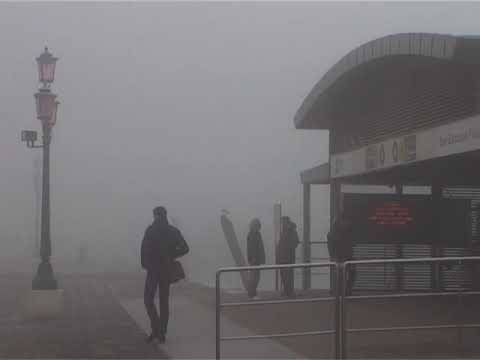

0 notes
Text
Direction Ecole Jean-Jacques Rousseau - Image source : jjrvdt.ch
Pour lui permettre de poursuivre ses nombreux projets d’avenir et de conserver son dynamisme, notre école revoit sa structure de direction et le fonctionnement de son administration.
Le Cercle scolaire du Val-de-Travers propose une école à visée inclusive qui met en œuvre de nombreux projets innovants permettant de suivre l’évolution de la société qui lui impose créativité et dynamisme.
De nos jours, l’école est soumise à une contrainte d’adaptation perpétuelle pour continuer à offrir un enseignement de qualité à ses élèves, en adéquation avec leurs besoins en constante évolution, et pour garantir l’égalité des chances pour chacun d’entre eux.
Pour lui permettre de poursuivre son évolution dans les meilleures conditions possibles, le Conseil communal a décidé d’adapter la structure de direction de l’école, organisée actuellement en codirection. Depuis le 1er janvier 2024, M. David Hamel occupe le poste de directeur de l’École Jean-Jacques Rousseau et travaille avec trois directeurs adjoints, Mme Sophie Fatton pour le cycle 1, M. Jean-Claude Othenin-Girard pour le cycle 2 et M. Terry Baillods pour le cycle 3. De plus, le secrétariat de l’école est désormais supervisé par M. Jean-François Biloni, tout comme l’ensemble du personnel administratif et technique de l’école.
Le Conseil communal remercie ces cinq cadres dirigeants pour leur implication et leur engage- ment au sein de l’École. Il se réjouit de confier la direction de l’école à M. Hamel, confiant que cette nouvelle organisation lui permettra de poursuivre sur la ligne voulue par l’Exécutif, soit celle une école moderne, évolutive et qui puisse répondre aux besoins des élèves des trois communes qui composent le Cercle scolaire du Val-de-Travers.
0 notes
Text
In literature, what are some classic examples of The Arcady being portrayed as a refuge for characters seeking solace?

The term "Arcady" conjures images of an idyllic and utopian landscape, a realm of timeless beauty and tranquility. The Arcady Showflat word, rooted in ancient Greek mythology, has transcended its origins to become a symbol of an earthly paradise, a place where nature and humanity coexist harmoniously. In literature, art, and the collective imagination, Arcady has served as a source of inspiration for centuries, offering a vision of a simpler, more pastoral existence that contrasts with the complexities and challenges of modern life.
The concept of Arcady finds its origins in Greek mythology, where it was associated with the god Pan and the nymphs known as the "Arcadian nymphs." Arcadia was a mountainous region in the heart of the Peloponnese, known for its rustic charm and natural beauty. In the myths, it was described as a place where shepherds lived in harmony with their flocks, where the gentle sounds of flutes and lyres filled the air, and where the pastoral lifestyle was idealized. It was, in essence, a vision of an earthly paradise, untouched by the cares and conflicts of the wider world.
Throughout history, the idea of Arcady has resonated with poets, writers, and artists, serving as a potent symbol of an unspoiled and uncorrupted natural world. In the Renaissance, the notion of Arcady experienced a resurgence, as artists and thinkers sought to recapture the simplicity and purity of classical antiquity. Painters like Nicolas Poussin and Claude Lorrain depicted idealized landscapes reminiscent of the Arcadian myth, where shepherds and nymphs roamed in peaceful harmony with nature.
In literature, Arcady has been a recurring theme in pastoral poetry, where it represents a yearning for a simpler, more authentic way of life. The English poet Philip Sidney's "Arcadia" and the pastoral poetry of John Milton and Edmund Spenser all drew upon the idea of Arcady as a symbol of an unspoiled natural world. These works often portrayed shepherds and shepherdesses as emblematic figures of virtue and simplicity, living in a timeless landscape of meadows and groves.
In the 18th century, the Enlightenment brought with it a fascination with Arcady as a contrast to the artificiality and excesses of society. Jean-Jacques Rousseau's writings, particularly his work "Emile, or On Education," emphasized the importance of returning to a more natural and unspoiled way of life, much like the pastoral existence associated with Arcady. Rousseau's philosophy had a profound impact on the Romantic movement, which celebrated nature and the untamed spirit of the individual.
In the visual arts, the Romantic era gave rise to a renewed interest in landscapes that evoked the spirit of Arcady. Painters like Caspar David Friedrich and John Constable captured the sublime beauty of the natural world, often portraying it as a sanctuary of peace and reflection. These artists sought to transport viewers to a realm of pure and unspoiled nature, a place where one could escape the hustle and bustle of industrialized society.
As the world transitioned into the 19th and 20th centuries, the allure of Arcady persisted, albeit in different forms. In literature, authors like F. Scott Fitzgerald explored the idea of an idealized past in works such as "The Great Gatsby," where the past is imagined as a kind of Arcadian paradise. Meanwhile, in the realm of urban planning and architecture, movements like the Garden City and the City Beautiful sought to bring elements of Arcady into the heart of cities, creating green spaces and park-like settings amidst the concrete and steel.
In the 21st century, the concept of Arcady continues to hold a special place in our collective imagination. In an era marked by environmental concerns and a longing for connection to the natural world, the idea of an earthly paradise remains relevant. Whether through literature, art, or our own personal aspirations, Arcady reminds us of the enduring human desire for simplicity, beauty, and harmony with the natural world. It is a timeless vision that continues to inspire and captivate us, offering a glimpse of an idyllic realm where the human spirit can find solace and renewal.
1 note
·
View note
Text
Where to buy a painting in Montreal
Nowadays the decoration of our interiors is a reflection of our personality, culture and lifestyle. From pop art to copies of classical grandmasters, the possibilities are endless and the offers are numerous. There are several hundred galleries, auction houses and websites in Montreal that offer a wide variety of art that can satisfy all tastes. With all these choices available to us it sometimes becomes difficult to know where to start to find the perfect painting for your place. So, I offer you 5 galleries that I like and where you can start your search for the perfect painting that will brighten your home for years.
Simons Blais Gallery.
If you are interested in abstract art, this gallery offers a fine selection of pieces by 20th century Automatistes and Plasticiens painters. Jean-Paul Riopelle, Claude Tousignant, Guido Molinari, Pierre Gauvreau and others but also contemporary artists such as Marie-Eve Beaulieu, Louis-Philippe Côté, Alexis Lavoie, Jessica Peters and my favorite: Frédérique Ulman-Gagné. Located in Montreal, at 5420 Boul. Saint-Laurent. If you're around, be sure to check it out. The staff is welcoming and helpful.
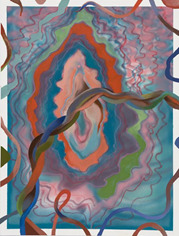
Carré D’Artistes
Old Montreal is another great place to find art shops. On St-Paul Street there are a dozen very fashionable galleries offering works by contemporary artists, pop art, abstract expressionism and urban art. Among these galleries, I noticed a newcomer, open only a few months ago. Carré d'artistes is a consortium of galleries that offers works by Canadian artists but also from elsewhere. Many beautiful pieces, a diversified style and above all reasonably priced. The gallery is located at 20 Rue St-Paul. Combine business with pleasure, take advantage of a walk in Old Montreal on a beautiful sunny day to discover this new gallery.
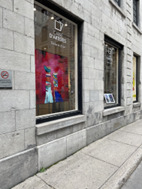
COA Gallery
Another shop on St-Laurent, here, modern abstraction, surrealism and concept art that reign. The COA Gallery presents works by emerging artists who explore new forms of visual expression. Very contemporary and experimental. I recommend to all those who are passionate about novelties. Located in Montreal at 6405 Saint-Laurent Boulevard. Combine your visit to COA Gallery to the Simons Blais Gallery and make it a day of artistic discovery on St-Laurent Street.

Canadian Classic Fine Art
For those who love Canadian figurative painting of the 20th century, this virtual gallery offers works by recognized Quebec artists such as Albert Rousseau, Armand Tatossian, Serge Brunoni and many others. The company has chosen to sell on the internet only, which allows it to offer works at a reasonable price. High-resolution photos and a powerful zoom allow you to examine the paintings in great detail and the gallery accepts returns up to 14 days after the date of receipt (see their return policy). Shipping is free anywhere in Canada and the United States. An excellent address to find works on the secondary market.
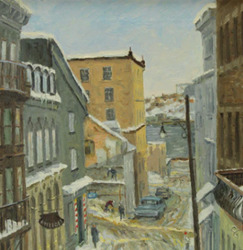
Artists in Canada
Many people find it very rewarding to buy a painting directly from the artist. By doing so they gain direct access with the creator of the work allowing them to establish a more intimate connection, understand his inspiration and discuss his artistic influences. If you think you would like this direct approach, I suggest a website that brings together several hundred artists that you can contact to explore their art and discuss the possibilities to buy one of their pieces. Artists in Canada is an independent, member-funded repertoire. You will find the links to contact the painters you are interested in and negotiate directly with them.

1 note
·
View note
Text
Jean-Claude Rousseau, bio-filmographie - Dérives autour du cinéma
1 note
·
View note